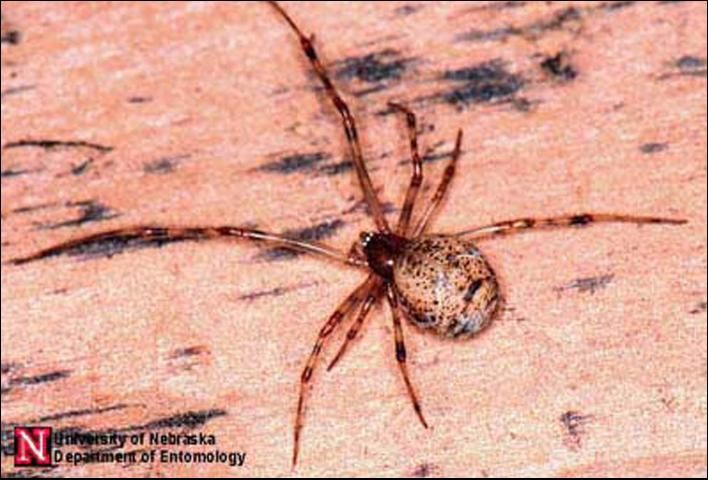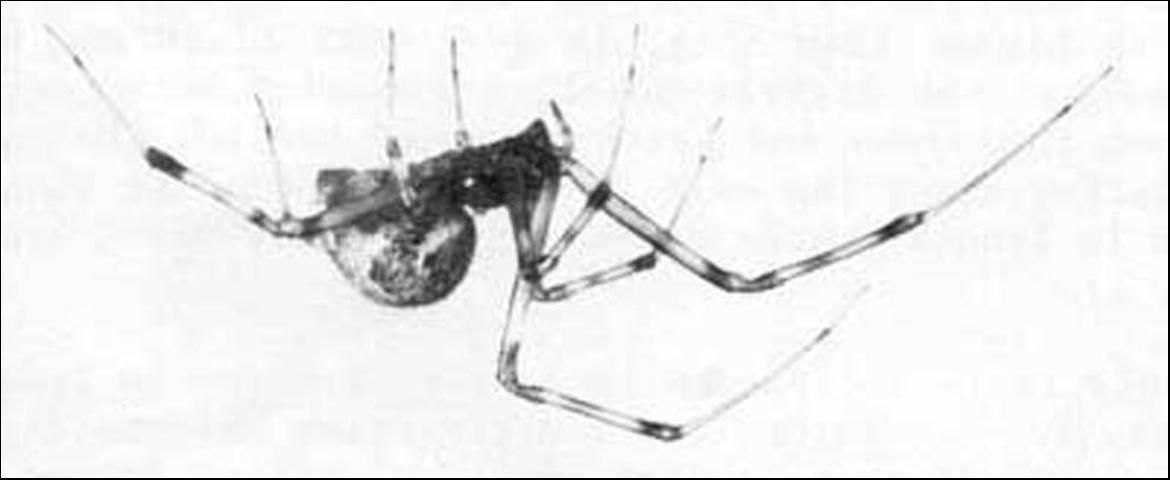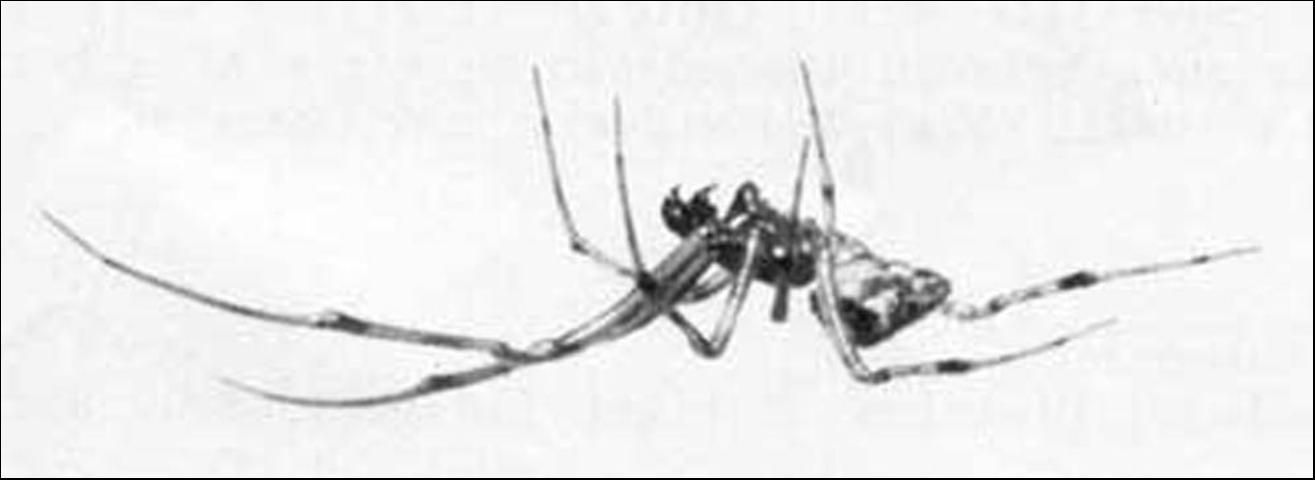The Common House Spider, Parasteatoda tepidariorum (C. L. Koch) (Arachnida: Araneae: Theridiidae)
The Featured Creatures collection provides in-depth profiles of insects, nematodes, arachnids and other organisms relevant to Florida. These profiles are intended for the use of interested laypersons with some knowledge of biology as well as academic audiences.
Introduction
The common house spider, Achaearanea tepidariorum (C.L. Koch), may be the most abundant of the several species of spiders that live in the company of man in the southeastern United States. Although Archer (1947) thought that Achaearanea tepidariorum was less common inside houses than Pholcus phalangioides Fuesslin (Pholcidae) in Alabama, he also noted its abundance.

Credit: Jim Kalisch, University of Nebraska, Lincoln
Levi (1967) considered Achaearanea tepidariorum to be a cosmopolitan species. Although the species was first described from Germany, it appears to be native to South America, judging from the numerous similar relatives that occur there. It is abundant in Central America and Mexico and occurs as far north as southern Canada (Levi 1955). It has been recorded from most of the contiguous United States (Levi and Randolph 1975). The species probably now has a worldwide distribution, having been carried around the world by man on plants. Although Achaearanea tepidariorum belongs to the same family (Theridiidae) as the notorious black widow spiders (Latrodectus spp.), it is not known to be dangerous to humans. One case of serious allergic reaction to the bite of Achaearanea tepidariorum is known from Gainesville, Florida.
Systematics
This species was known for many years under the name Theridion tepidariorum C. L. Koch 1841. Archer (1947, 1950) created a new genus Parasteatoda for a group of species that Levi (1955) later considered to belong to the genus Achaearanea. Parasteatoda was resurrected by Saaristo (2006).
Description
Carapace and sternum are yellow to brown, legs are yellow to brown with darker rings. The abdomen is higher than long, is gray with black and white pigment, and has a white spot behind the highest point, surrounded anteriorly by black with dark lines running down the sides and black chevrons behind. The venter has two light patches enclosing a darker area. The male is darker and smaller than the female; females range from 5 to 8 mm in length, while males are generally about 4 mm in length (Levi 1955, 1967).

Credit: Jeff Lotz, Division of Plant Industry

Credit: Jeff Lotz, Division of Plant Industry
Diagnosis
The species most likely to be confused with Achaearanea tepidariorum is Tidarren sisyphoides (Walckenaer 1841). However, Tidarren sisyphoides has a distinctive white stripe on the posterior part of its abdomen, and it forms a sort of "tent" out of a dead leaf in the middle of its web under which it hides. Also, the males of Tidarren sisyphoides are tiny, about 2 mm in body length.
Habits and Habitat
Females and juveniles make typical theridiid webs (tangle webs). These webs are frequently made between two adjoining edges of a building, for example, between an eave and a wall. Many individuals may occur in the same area and build nearly contiguous webs covering large areas of eaves, wall space, and window frames. Webs may be built both inside and outside of buildings. When inside, they are frequently a major contributor to the build-up of "cobwebs." Sheds, privies, barns, and stables, in addition to dwellings, may have heavy populations of this species. Other characteristic habitats include undersides of highway bridges and culverts. It is largely absent in wild situations except around entrances and in outer chambers of caves, on dry mountain ledges, and on dry ledges of river bluffs (Archer 1947).
Achaearanea tepidariorum feeds on a variety of prey, including German cockroaches and scorpions (Archer 1947; personal observation). While awaiting prey, spiders are usually positioned in the middle of their webs, but resting individuals may be nearer a lateral or upper edge of the web, where the complex color pattern on the spiders' bodies near the substrate may help camouflage them against some enemies. Frequently males may be seen hanging in webs of adult and subadult females. A single female may produce many pear-shaped light-brown egg sacs during the year, which are hung freely in the web. At least in Florida, all stages seem to occur throughout the year.
Selected References
Archer, A.F. 1947. The Theridiidae or comb-footed spiders of Alabama. Alabama Mus. Natur. Hist. Paper 22: 1-67.
Archer, A.F. 1950. A study of theridiid and mimetid spiders, with descriptions of new genera and species. Alabama Mus. Natur. Hist. Paper 30: 1-40.
Levi, H.W. 1955. The spider genera Coressa and Achaearanea in America north of Mexico (Araneae: Theridiidae). Amer. Mus. Novit. 1718: 1-33.
Levi, H.W. 1967. Cosmopolitan and pantropical species of theridiid spiders (Araneae: Theridiidae). Pacific Insects 9: 175-186.
Levi, H.W., and Diane E. Randolph. 1975. A key and checklist of American spiders of the family Theridiidae north of Mexico (Araneae). J. Arachnol. 3: 31-51.
Saaristo MI. 2006. Theridiid or cobweb spiders of the granitic Seychelles islands (Araneae, Theridiidae). Phelsuma 14: 49-89.



